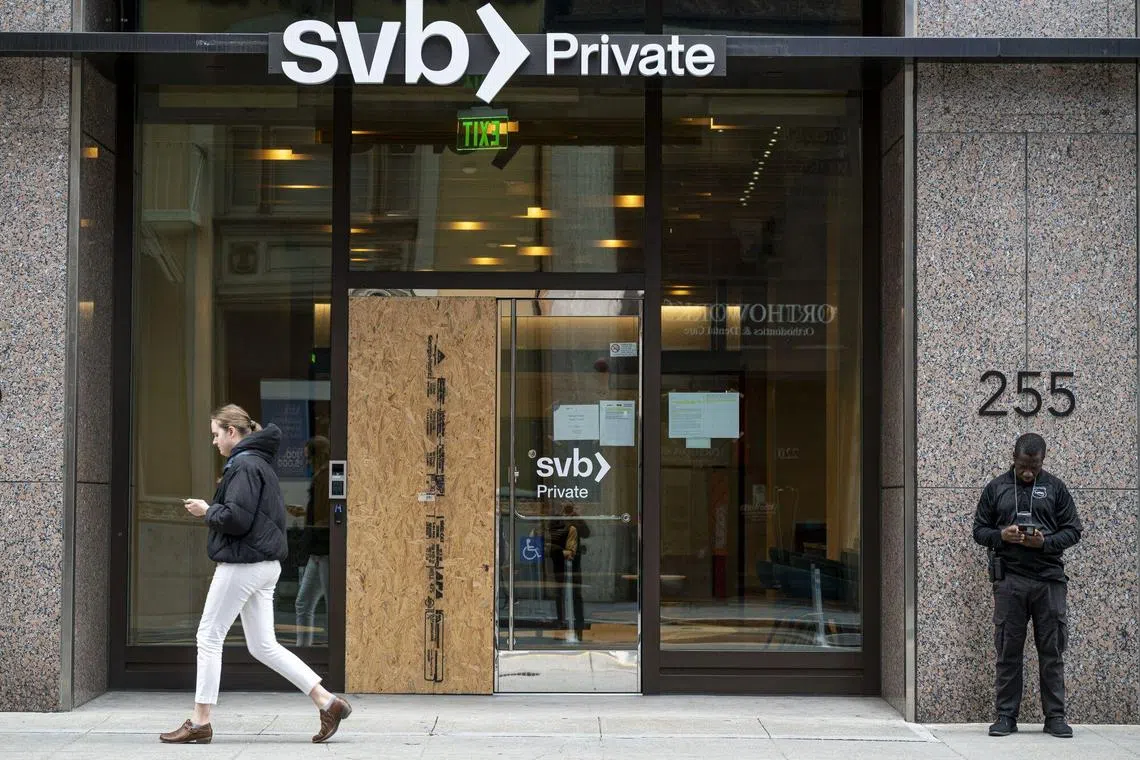How customers of SVB and Signature will get their money back
Sign up now: Get ST's newsletters delivered to your inbox

The cost could eventually be passed on to some banking customers, if the fallout is severe enough.
PHOTO: BLOOMBERG
Follow topic:
NEW YORK – To stem financial panic, the US government has promised to backstop any losses faced by customers of Silicon Valley Bank (SVB)
Though President Joe Biden said taxpayers would not foot the bill for the efforts, the cost could eventually be passed on to some banking customers, if the fallout is severe enough. Here is a look at three sources of money that can help the government carry out its promise, and another that might help other banks avert similar crises.
Deposit insurance fund
The Federal Deposit Insurance Corp (FDIC) has a fund specifically designed to repay depositors if their bank fails. Typically, this is capped at US$250,000 a customer for each eligible bank and per ownership category. But the government has made an exception for SVB and Signature Bank and agreed to make all their depositors whole.
The deposit insurance fund is funded in two ways: through premiums charged to the insured banks, and through interest earned on funds invested in US government securities.
According to the FDIC’s website, the fund had a balance of US$128.2 billion at the end of 2022. For context, SVB had more than US$175 billion in deposits at the end of 2022, and Signature had roughly US$89.2 billion in deposits as at March 8.
Banks’ assets
One of the first steps the FDIC will take, now that it has seized both SVB and Signature, is to sell whatever assets it can. The proceeds of those sales would then be used to pay back depositors. At the end of 2022, SVB had US$209 billion in total assets, and Signature Bank had total assets of US$110.4 billion.
SVB’s loan portfolio is seen as particularly attractive to prospective buyers and was not a contributing factor in the bank run that caused its demise. Apollo Global Management, Blackstone, Ares Management, Carlyle Group and KKR & Co are among those that have expressed interest in buying pieces of SVB, sources told Bloomberg.
Bank fees
The FDIC can replenish its insurance fund by charging banks for a “special assessment”. This fee will vary based on bank size.
There is concern among some groups that banks might pass the fee on to their customers by charging higher fees, increasing interest rates on loans or reducing the interest they pay on deposits.
Some lawmakers say they would take steps to protect consumers from having to face those costs.
Emergency loans
The US Federal Reserve created a new emergency lending programme to stem panic and protect other banks from encountering similar struggles. The Bank Term Funding Programme will offer loans for up to one year to qualifying banks that provide eligible collateral.
If those loans are not fully paid back by the borrowers, the funding programme will be backed up by US$25 billion from the Exchange Stabilisation Fund (ESF) – a pot of money at the Treasury Department typically used to buy or sell currencies and provide financing to foreign governments.
The ESF has in recent years been used as a backstop for emergency lending facilities by the Fed. However, some analysts say it is unlikely the Fed will need to use it, as banks tapping the emergency facility need to provide low-risk collateral such as Treasury securities or agency mortgage-backed securities before receiving a loan. BLOOMBERG

